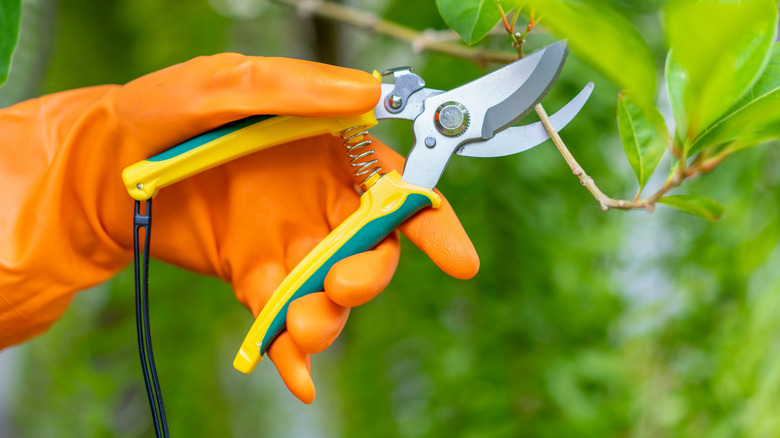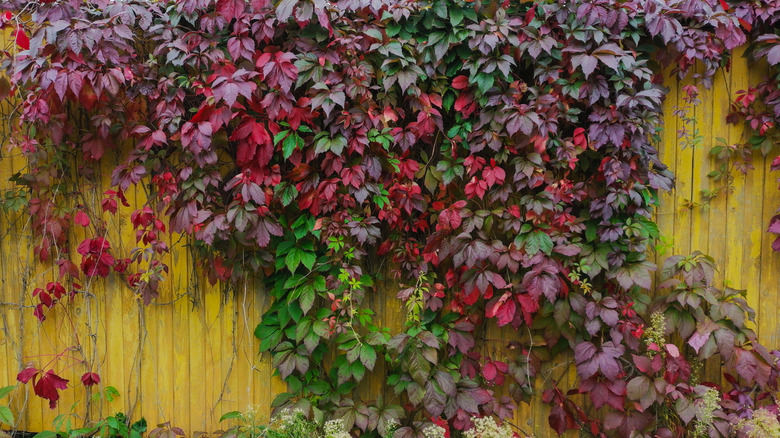This Aggressive Vine Needs Pruning In October To Keep It From Taking Over
The leaves of the Virginia creeper (Parthenocissus quinquefolia) help paint your landscape in all of the colors of fall, turning purple and scarlet red with the cooler temperatures. While the sight of a wild, untamed vine may feel like a scene right out of your favorite autumn movie or even something from Stars Hollow, the truth is a little less charming: Left unkept, Virginia creeper can cause significant damage. The sprawling vines can cling to gutters, roofs, shutters, and even the area around windows without proper maintenance, or an alternative climbing source, such as a trellis. October is a good time to prune this aggressive vine to manage its spread, as its growth slows nearing dormancy.
The woody ornamental vine, Virginia creeper, is native to North America and known for its beautiful foliage but aggressive nature. Fast-growing, it can quickly span to 30 to 50 feet or even longer, depending on its maintenance. In addition to adding an enchanting touch to your landscape, it helps feed migratory birds with its dark berries. Due to its compound leaf with five leaflets an growth style, its a vining weed you can mistake for poison ivy (Toxicodendron radicans); however, poison ivy only features three leaflets. Despite these differences in appearance, Virginia creeper is also toxic. Ingestion of its berries can cause a severe reaction including symptoms such as nausea, vomiting, and sweating. In some cases, it may even be fatal. With this in mind, you should always prune the vine to prevent it from getting too close to any play areas, swing sets, and any other children frequently visit. Even without little ones or furry friends to worry about, the unchecked Virginia creeper can still be a problem, even growing so much it may smother other plants.
How to prune Virginia creeper
You can prune the Virginia creeper anytime before it takes over your yard, but doing it in October, before the plant goes fully dormant, is ideal. With a good pair of shears in hand, start by pruning any vining parts that threaten your windows or other areas of your home and garden. Next, focus on the three D rules of pruning plants: dead, diseased, and damaged. Remove all vine stems that fall under these descriptions, cutting it back to healthy wood.
If the creeper has made its way onto your wall, avoid pulling it directly away, as you may damage the masonry or painted surface thanks to the vine's firm adhesive holdfasts, or discs. Instead, cut it away with the shears. Keep your cuts clean without leaving a stub, as this helps prevent disease or pests.
Always wear gloves and other protective gear when working with a Virginia creeper, as the vines' sap can be irritating to the skin, causing contact dermatitis in sensitive individuals. It's also common for poison ivy and Virginia creeper to grow together, so your gear can protect you from irritation from either plant. With careful pruning, the Virginia creeper will come back vigorously in the spring, blooming with small white flowers that attract pollinators.

